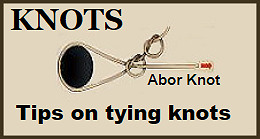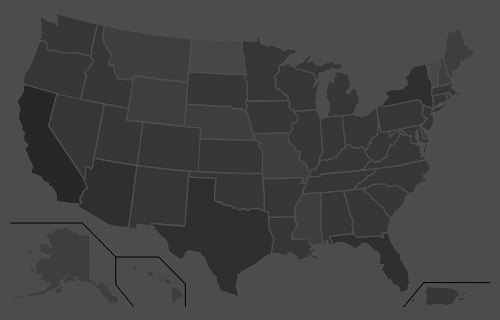“Our added winter moisture and active calling period led to a very long nesting and hatching season, starting in late April and extending into early summer, with chicks hatching as late as early July,” O’Dell said. “From a population standpoint, we are out of a deficit for the first time since 2001-2002. Quail are starting to pop up in places they haven’t been seen in a while.
“If you’ve never had the chance to experience what Arizona quail hunting built its name on, then this would be the year to get out and enjoy it.”
Meanwhile, hunters should note that the season for Mearns’ quail doesn’t begin until Dec. 4. It’s summer rainfall that plays a key role in nesting success and population numbers of this species. After a spotty and relatively weak monsoon across southern Arizona, these birds are likely to be abundant only in pockets that received sufficient precipitation this summer.
A valid Arizona hunting or combination hunt and fish license is required for all hunters 10 and older. Those hunters under 10 must either have a valid hunting or combination hunt and fish license, or be accompanied by an adult who possesses a valid hunting or combination hunt and fish license. Licenses can be purchased online or at license dealers statewide. A youth combination hunt and fish license (ages 10 to 17) is $5.
The general bag limit is 15 quail per day in the aggregate, of which no more than eight may be Mearns’ quail (when the Mearns’ season opens Dec. 4). The general possession limit is 45 quail in the aggregate after opening day, of which no more than 15 Gambel’s, scaled or California quail in the aggregate may be taken in any one day. After the opening of the Mearns’ season, the 45-quail possession limit may include 24 Mearns’ quail, of which no more than eight may be taken in any one day.
More quail-hunting information can be found on the department’s website at https://www.azgfd.com/Hunting/. Another resource for both new and experienced hunters alike is “An Introduction to Hunting Arizona’s Small Game.” Written by Randall D. Babb, the 196-page, full-color book covers where and how to hunt small game birds (like quail), squirrels, rabbits, ducks and geese. It also includes how to prepare and cook your harvest, with illustrations and recipes. The book can be ordered for $16.95 at www.azgfd.gov/publications.
Finally, hunters should check out O’Dell’s techniques for field-dressing quail at https://www.youtube.com/watch?v=3gRwZAcWzzk.
####
Publishers Notes: OUT OF STATE HUNTERS, FISHERMEN & OUTDOOR ENTHUSIASTS; Due to the Covid 19 pandemic, there could be limitations for OUT of STATE hunters, fishermen and other outdoor enthusiasts to include a 14-day quarantine requirement or negative COVID-19 testing alternative. Please check with the State's Department of Natural Resources BEFORE you travel or apply for the 2020 Fall Hunts.
Disclaimer: The views expressed on this site are that of the authors and not necessarily that of TBC Press
North Carolina Confirms First CWD-Positive Deer Found in Yadkin County
Submitted by: TBC Press
Posted on: 04/12/22
The Backcountry Press
The country's premier daily HUNTING, FISHING & OUTDOOR news in the USA and around the globe. Read whats happening in your neck of the woods & beyond.
© 2020 TBC Press - All Rights Reserved Website Design by:
News # 14747
Now that a positive detection has been verified, agency staff will continue to follow the CWD Response Plan in collaboration with the NC Department of Agriculture & Consumer Science, and will continue to share the agency’s next steps with the public through multiple communication channels. An out-of-cycle meeting with Commissioners will be held on April 7, and public meetings in the impacted area will be announced as they are scheduled.
“Although the detection of CWD is bad news, we have been preparing for this possibility for decades. Our long-term goal is to protect our deer herd and our deer hunting culture. Achieving that goal means we must work with our constituents to implement our response plan and refine our long-term management strategy,” said Howard. “We’ve been in contact with wildlife professionals in other states that are already CWD-positive to learn from their experiences. Adapting to CWD is going to be a challenge for everyone, but I’m confident that our staff and North Carolina deer hunters can do it.”
Continued testing is imperative because it’s nearly impossible to tell if a deer has CWD by observation. Signs of illness may not be apparent for 16 months or more after infection. The slow incubation period, ease of transmission, and the fact that there is no vaccine, treatment or cure make CWD a looming threat to the state’s white-tailed deer population and deer hunting traditions. Given enough time, the disease is always fatal.
CWD is caused by abnormal proteins, called prions, that slowly spread through a deer’s nervous system, eventually causing spongy holes in the brain that lead to death. The disease is spread between deer through direct contact and environmental contamination from infected saliva, urine and feces of live deer or carcasses and body parts.
For more information about CWD, including answers to frequently asked questions, visit ncwildlife.org/CWD and get to KNOW CWD through this 5 minute video released by the Wildlife Commission.
####
Officials with the N.C. Wildlife Resources Commission recently announced that a sample collected from a hunter-harvested, white-tailed deer in Yadkin County has tested positive for Chronic Wasting Disease (CWD). This is the first case of CWD detected in North Carolina’s deer herd and was confirmed by the National Veterinary Services Laboratory in Ames, Iowa.
The deer was harvested in northern Yadkin County in December 2021. The sample was sent in by a taxidermist through a cooperator program established by the Wildlife Commission. Wildlife Commission staff ramped up testing this past season and collected over 7,200 samples from cooperators and hunters due to the discovery of a CWD-positive deer 33 miles away from the North Carolina border last year in Montgomery County, Virginia.
“We are appreciative of all the cooperating taxidermists, meat processors and hunters that have helped us with our CWD surveillance,” said Brad Howard, chief of Wildlife Commission’s Wildlife Management Division. “Their diligence helped us to detect the presence of CWD now, which is much better than if the disease had gone undetected. Now that we know the disease is in North Carolina we will implement our CWD Response Plan to help slow the spread of CWD while preserving our deer herd and deer hunting tradition.”
While there has been only one confirmed positive to date, the Wildlife Commission continues to receive results from this year’s testing. At this time, the agency has received results from 60% (4,287) of all samples submitted, and 76% (626) of results from a four-county focal area (Alleghany, Surry, Stokes, and Rockingham) that was initiated because of the 2021 Virginia CWD-positive deer.












